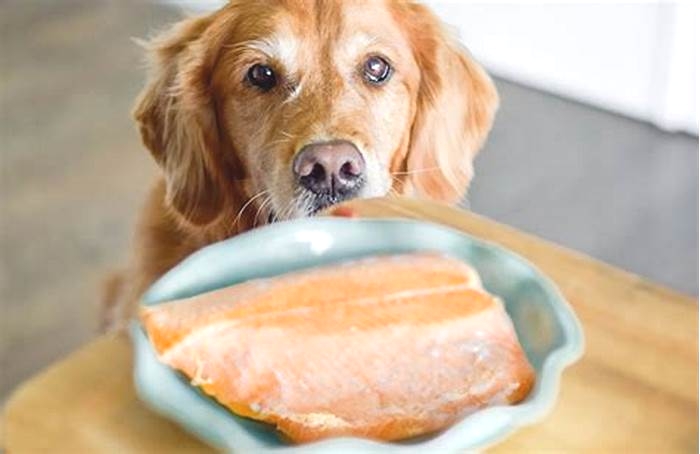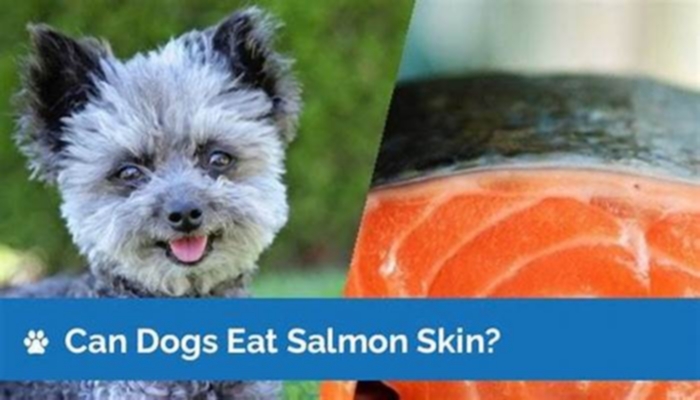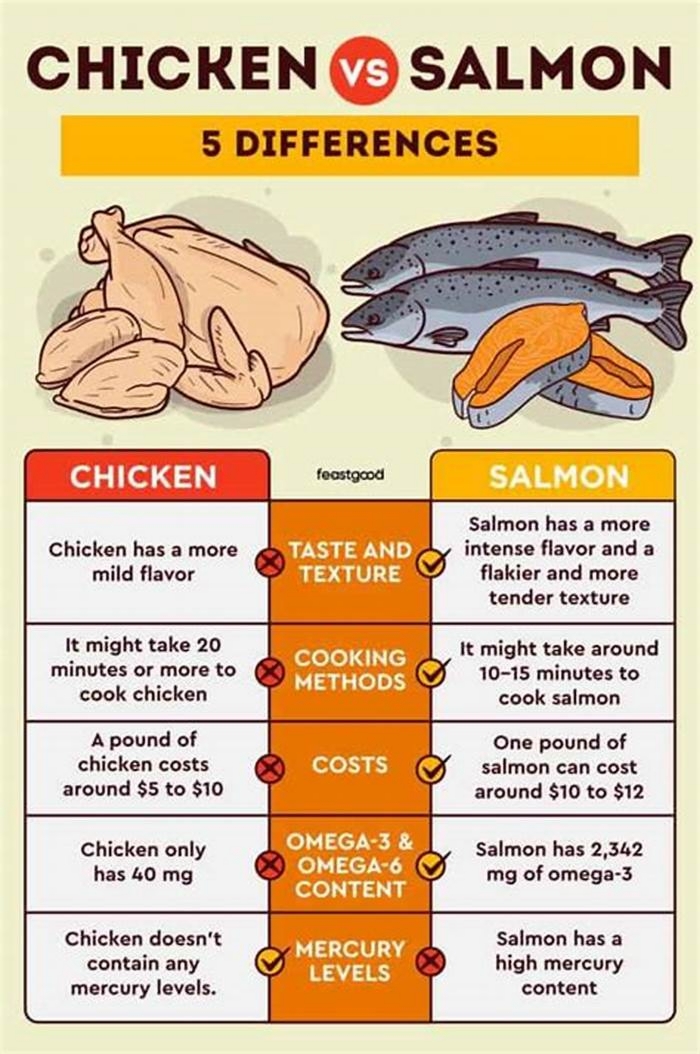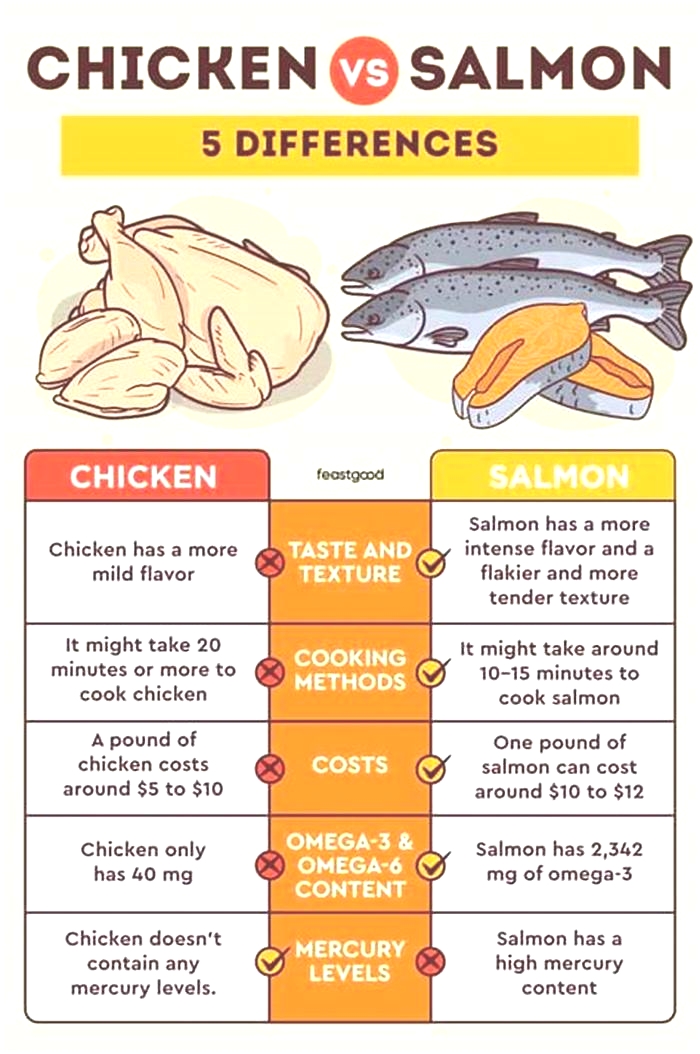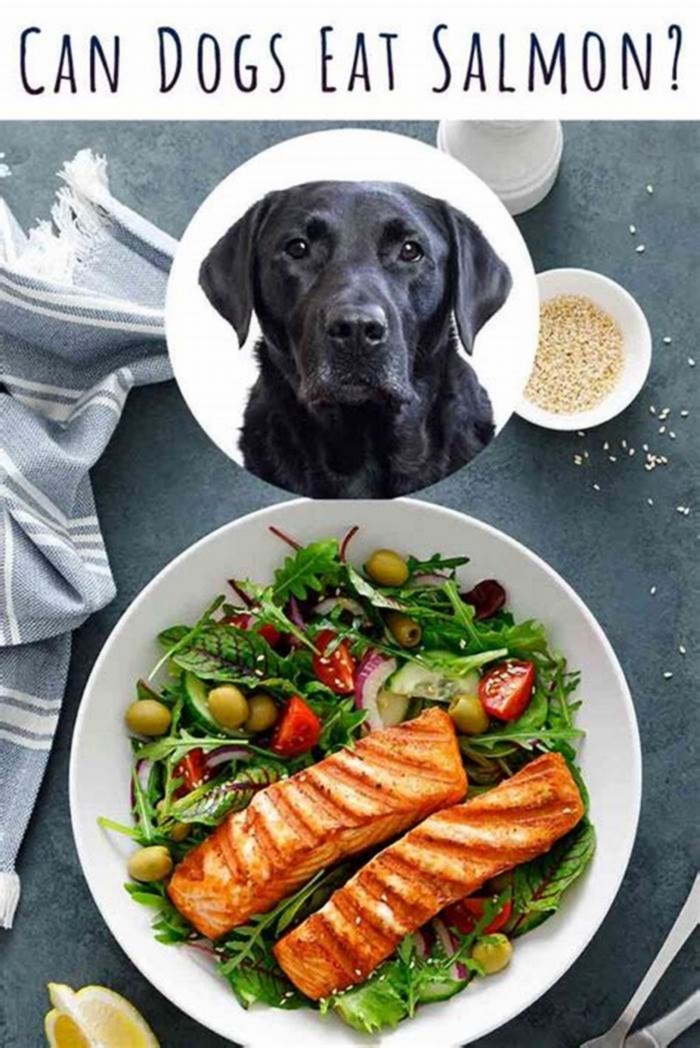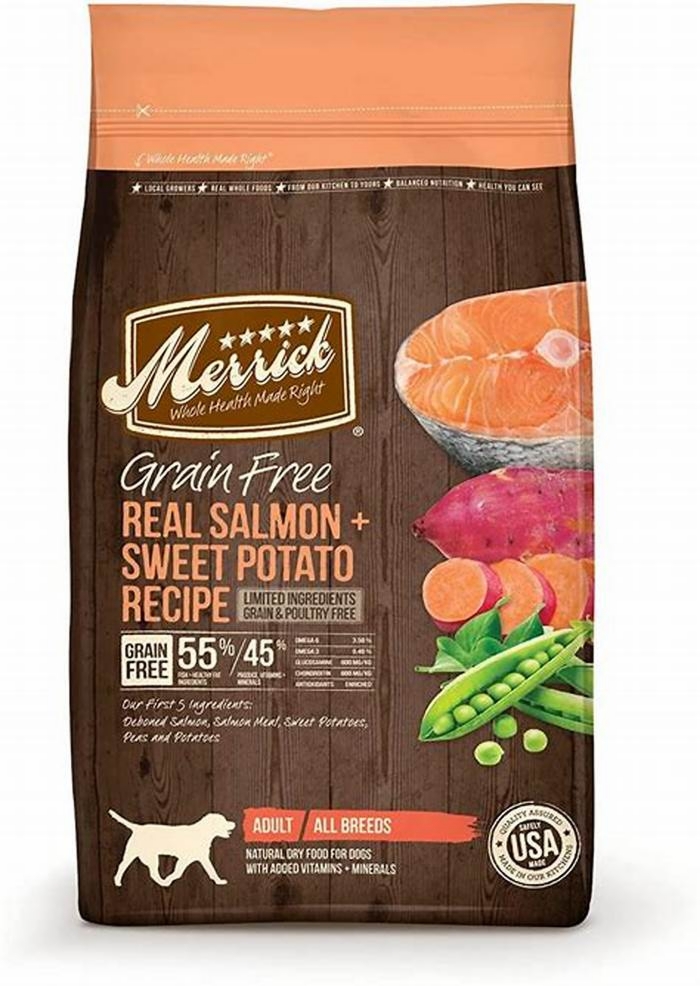Is salmon too rich for dogs
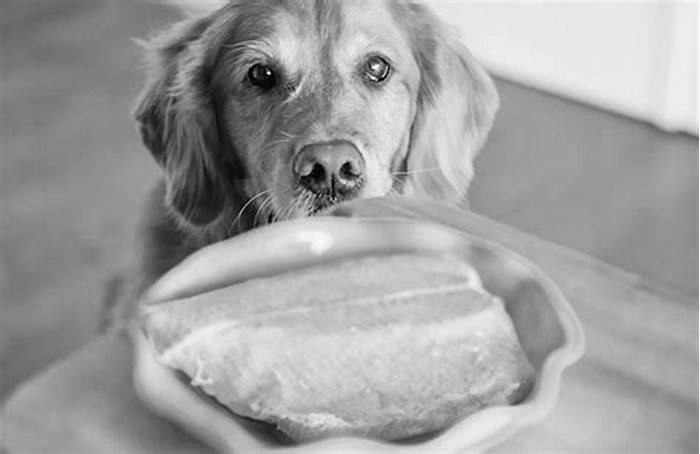
Feeding Salmon to Dogs: Vets Omega-3 Guide
As a holistic veterinarian, Im often asked about the best dietary choices for our furry friends. One question that frequently comes up is, can dogs have salmon? Understanding canine nutrition is key to answering this, particularly the importance of protein and essential nutrients that fish like salmon can provide.

Dogs, like us, need a balanced diet to thrive. Protein plays a pivotal role in their nutrition, helping everything from muscle development to immune system strength. Fish, particularly salmon, is a fantastic source of high-quality protein for our pets. But thats not all. Salmon is also rich in essential nutrients like omega-3 fatty acids, which can support your dogs overall health, from a shiny coat to heart health.
However, while salmon may seem like a superfood for dogs, its important to feed it correctly to avoid potential risks. In the following sections, well explore the benefits and potential risks of feeding salmon to dogs, the correct way to prepare it, common questions, and even alternatives for dogs who might not be fans of this fishy treat. So, lets dive in and unravel the truth about dogs and salmon!
Remember, your dogs diet can significantly impact their health and happiness. So, understanding the ins and outs of what they can and cant eat, like can dogs have salmon, is vital for every pet parent. Stay with me as we swim through this topic together!
Can Dogs Have Salmon? Unraveling the Truth
As a holistic veterinarian, I get asked a lot, can dogs have salmon? The simple answer is yes, but its not that straightforward. Lets dive into the details.
The Benefits of Salmon for Dogs
Salmon is an excellent source of high-quality protein, which is crucial for your dogs overall health. It promotes muscle development and aids in repairing damaged tissues. Moreover, salmon is packed with Omega-3 fatty acids. These essential fats support your pets brain and heart health, enhance their skin and coat condition, and can even help reduce inflammation caused by conditions like arthritis.
- High-quality protein: Supports muscle development and tissue repair
- Omega-3 fatty acids: Promotes brain and heart health, improves skin and coat condition, and reduces inflammation
Potential Risks of Feeding Salmon to Dogs
However, feeding salmon to dogs isnt without risks. Raw or undercooked salmon can contain parasites that can cause salmon poisoning disease, a potentially fatal condition. Its important to always serve salmon cooked and never raw. Moreover, bones in salmon can pose a choking hazard or cause internal injuries.
Also, while salmon is nutrient-rich, its high in fat. Overfeeding can lead to obesity and pancreatitis, which is why portion control is crucial. Remember, salmon should complement your dogs diet, not dominate it.
Another concern is farmed salmon, which may contain high levels of contaminants. Opt for wild-caught salmon when possible, and always consult your vet before introducing new foods into your pets diet.
- Parasites: Can cause salmon poisoning disease if salmon is raw or undercooked
- Bones: Pose a choking hazard or can cause internal injuries
- High fat: Overfeeding can lead to obesity and pancreatitis
- Contaminants: Farmed salmon may contain high levels of harmful substances
In conclusion, dogs can have salmon its a nutritious addition to their diet. However, its important to prepare it correctly and serve in moderation to ensure your pet reaps the benefits without the risks.
Feeding Salmon to Dogs: Vets Omega-3 Guide
The Right Way to Feed Salmon to Dogs
Feeding your dog salmon can be an excellent way to supplement their diet with high-quality protein and essential fatty acids. However, its crucial to prepare and serve it correctly to ensure your canine companions safety and health. Lets talk about how to do this.
Preparing Salmon for Dogs: Cooked vs. Raw
When it comes to serving salmon to your dog, always choose cooked over raw. While some pet parents may be tempted to serve their dogs raw salmon due to the popularity of raw diets, its important to remember that raw salmon can carry parasites that are harmful to dogs. These parasites can cause salmon poisoning disease, a potentially fatal condition.
To ensure the salmon is safe for your dog to eat, it should be thoroughly cooked to kill any parasites or bacteria. Avoid using any seasoning, as certain spices and herbs can be toxic to dogs. A simple, plain, cooked salmon fillet is the best option.
Portion Control: How Much Salmon Can Dogs Have
Even though salmon is nutritious, its crucial to feed it to your dog in moderation. Too much of any one food can lead to nutritional imbalances and health problems. As a general rule, treats and extras like salmon should make up no more than 10% of your dogs daily caloric intake.
- Small dogs (up to 20lbs) 1-2 small pieces of cooked salmon per week
- Medium dogs (20-60lbs) 2-3 small pieces of cooked salmon per week
- Large dogs (over 60lbs) 3-4 small pieces of cooked salmon per week
Remember, these are just guidelines. Every dog is unique, and their dietary needs may vary based on their size, age, and health status. Always consult your vet if youre unsure about how much salmon to feed your dog.
Note: While salmon is a great addition to your dogs diet, it shouldnt replace a complete and balanced dog food. Your dogs main meals should still consist of a high-quality commercial dog food that meets all their nutritional needs.
Common Questions about Dogs and Salmon
In this section, well address two of the most common questions dog owners have about feeding salmon to their pets.
Can Dogs Eat Salmon Skin and Bones?
Salmon skin can be a tasty treat for dogs and is rich in essential fatty acids. However, its important to ensure its thoroughly cooked to kill any potential parasites. Raw salmon skin can carry a parasite that causes salmon poisoning disease, which can be fatal to dogs.
As for salmon bones, they pose a significant risk. Cooked bones can splinter and cause internal injuries when swallowed. Raw bones also carry the risk of salmonella infection. Therefore, its best to remove all bones from the salmon before feeding it to your dog.
Is Canned Salmon Safe for Dogs?
Canned salmon can be a convenient and safe option for dogs, but there are a few things to keep in mind.
- Buy canned salmon thats packed in water, not oil. Oil can add unnecessary fats to your dogs diet.
- Choose low-sodium or no-salt-added varieties. Too much salt can lead to dehydration and other health problems in dogs.
- Ensure the canned salmon is bone-free. As mentioned earlier, salmon bones can pose a choking hazard and cause internal damage.
Remember, even though salmon is safe for dogs, it should be served in moderation and as part of a balanced diet. Always consult with your vet if you have any concerns or questions about feeding salmon to your dog.
In the next section, well explore some alternatives to salmon in a dogs diet.
Alternatives to Salmon in a Dogs Diet
Its important to know that while salmon can be beneficial for dogs, it isnt the only fish or protein source available. There are other options that can provide your furry friend with the essential nutrients they need.
Other Fish Types Suitable for Dogs
Other types of fish can also be a great source of protein and omega-3 fatty acids for your dog. For instance:
- Sardines: These small fish are rich in omega-3, vitamin D, and calcium. They are often available canned, making them an easy addition to your dogs diet.
- Mackerel: This oily fish is another excellent source of omega-3. Just make sure its cooked thoroughly before feeding it to your dog.
- Tuna: Tuna is low in fat and high in protein, but it should be served in moderation due to its high mercury content.
Remember, all fish should be cooked and deboned before serving to your dog to prevent any health risks.
Non-Fish Protein Sources for Dogs
If your dog isnt a fan of fish, or you want to add variety to their diet, there are plenty of other protein sources to consider:
- Chicken: It is a lean and easily digestible protein source that most dogs enjoy.
- Beef: This red meat is rich in iron and protein, making it a good option for active dogs.
- Lamb: Lamb is often recommended for dogs with food sensitivities or allergies.
- Turkey: Turkey is a lean protein that can be a good option for dogs that need to lose weight.
Just like with salmon, these protein sources should be cooked properly and served in appropriate portions to keep your dog healthy and happy.
Frequently Asked Questions
Q1: Is it safe to feed salmon to my dog?
A: Yes, it is safe to feed salmon to your dogs but it must be cooked properly to kill parasites. Raw or undercooked salmon can lead to salmon poisoning disease, which can be fatal.
Q2: How much salmon can I feed my dog?
A: The amount of salmon you can feed your dog depends on their size, age, and overall health. Its best to consult with your vet to determine an appropriate amount.
Q3: Can salmon be a substitute for my dogs regular food?
A: While salmon is a great source of Omega-3 fatty acids, it should not replace your dogs regular diet. Its best to use it as a supplement or occasional treat.
Q4: What are the benefits of feeding salmon to my dog?
A: Salmon is a great source of Omega-3 fatty acids, which can improve your dogs skin and coat health, boost their immune system, and support joint health.
Q5: Can I feed my dog salmon skin?
A: While salmon skin isnt harmful to dogs, its often high in fat and can lead to pancreatitis in dogs if consumed in large amounts. Its best to remove the skin before feeding salmon to your dog.
Can Dogs Eat Salmon? Vet Reviewed Nutrition Facts & Precautions
The information is current and up-to-date in accordance with the latest veterinarian research.
Learn moreWhen you think of dog food, you probably think of beef or chicken instead of novel protein sources like salmon. Part of the reason lies in the habitat we associate with canines. Wolves typically live in various areas, such as prairies and forests. Coastlines dont usually fit in our thinking. Yet, salmon has a lot to offer your pup, which makes it a worthwhile choice.
The short answer is that you can give your dog salmon as an occasional treat. You can also feed your dog a commercial diet containing this protein source so that they can enjoy the numerous health benefits it offers.

Is Salmon Good for Dogs?
Nutritional Value of Salmon
A 100-gram serving of salmon contains a whopping 20 grams of protein. According to the Association of American Feed Control Officials (AAFCO), adult dogs should get a minimum of 18% protein in their food every day, making salmon a good option for your dog.1 Its also a rich source of magnesium, potassium, selenium, and vitamin A.
Research on human health benefits touts the anti-inflammatory properties of salmon . This is mostly because it contains high amounts of omega-3 fatty acids, which also benefit your dogs health. On the downside, salmon might not be a great option for an overweight dog that needs to shed some pounds. This is because salmon has a lot of fat at 13.4 grams in a 100-gram serving. An adult dog needs to ingest only 5.5% of fat in their daily diet to maintain their weight.
The calories are another issue: a 100-gram serving of wild salmon has 142 calories, while farmed salmon will contain approximately 208 calories. This is quite a bit, representing more than half of the daily recommended daily caloric intake for a 10-pound male intact dog. However, itll likely keep your dog sated. Its worth noting that salmon doesnt contain everything your pup needs. Therefore, its best given as an occasional treat to add to their diet and not as a staple diet. Nonetheless, your pet will undoubtedly like it if just for its strong smell.
Of course, fish sourced from different areas will vary in how strong it tastes and smells.
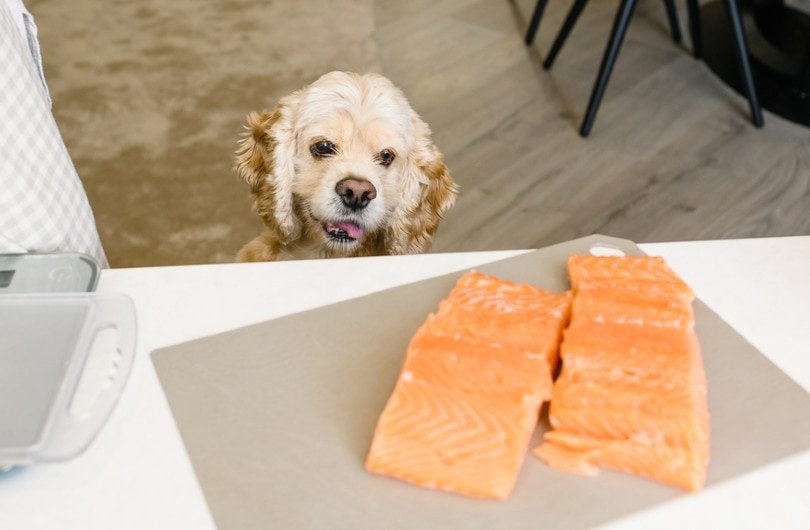

Tips for Giving Your Dog Salmon
You probably heard about Salmon poisoning in dogs. The disease is not actually caused by a toxin but the presence of fluke worms in the salmon named Nanophyetus salmincola infected by the bacteria Neorickettsia helminthoeca. Never give your dog raw or undercooked salmon. If they ingest a raw salmon infected with this bacteria, it could cause signs of salmon poisoning within a week. This problem has been reported in Oregon, northern California, Washington, and southern Vancouver Island (Canada).
Our nutritional figures are based on fresh salmon cooked with dry heat. It will vary depending on how you cook it, but as mentioned it is already pretty fatty, so please avoid adding extra oils. Of course, its essential to ensure ingredients that dogs should never get, such as onion and garlic, are not a part of the preparation. Another concern rests with the pin bones for you and your pet. We recommend running your fingers over the meat and removing any you find before giving it to your dog.
The takeaway is to stick to cooked salmon and offer it in moderation. You should always introduce new foods to your pup slowly to avoid vomiting and GI distress. Give your pet a small piece and observe their reaction. If theyre allergic or intolerant of the high-fat content, youll know only after your dog consumes it.
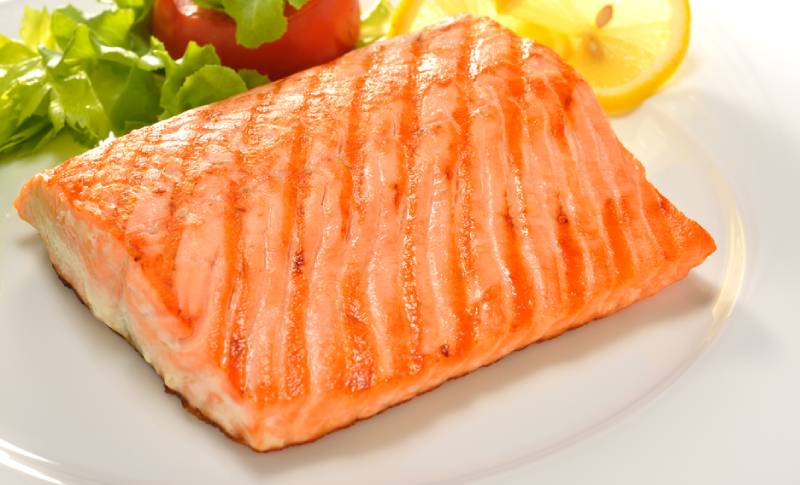

Summing Up
Salmon is an excellent choice for a healthy lifestylefor people. While dogs can eat it, you should limit how much and how often you give it to your pup. The chances are your pooch will like it, and they could benefit from its high nutritional value. However, it may be too rich for some pets, making it something just for special occasions.
See also:
Featured Image Credit: congerdesign, Pixabay



